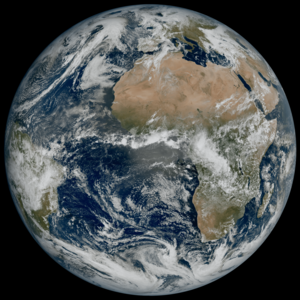Accept all cookies Accept only essential cookies See our Cookie Notice

About ESA
The European Space Agency (ESA) is Europe’s gateway to space. Its mission is to shape the development of Europe’s space capability and ensure that investment in space continues to deliver benefits to the citizens of Europe and the world.
Highlights
ESA - United space in Europe
This is ESA ESA facts Member States & Cooperating States Funding Director General Top management For Member State Delegations European vision European Space Policy ESA & EU Space Councils Responsibility & Sustainability Annual Report Calendar of meetings Corporate newsEstablishments & sites
ESA Headquarters ESA ESTEC ESA ESOC ESA ESRIN ESA EAC ESA ESAC Europe's Spaceport ESA ESEC ESA ECSAT Brussels Office Washington OfficeWorking with ESA
Business with ESA ESA Commercialisation Gateway Law at ESA Careers Cyber resilience at ESA IT at ESA Newsroom Partnerships Merchandising Licence Education Open Space Innovation Platform Integrity and Reporting Administrative Tribunal Health and SafetyMore about ESA
History ESA Historical Archives Exhibitions Publications Art & Culture ESA Merchandise Kids Diversity ESA Brand Centre ESA ChampionsLatest
Space in Member States
Find out more about space activities in our 23 Member States, and understand how ESA works together with their national agencies, institutions and organisations.
Science & Exploration
Exploring our Solar System and unlocking the secrets of the Universe
Go to topicAstronauts
Missions
Juice Euclid Webb Solar Orbiter BepiColombo Gaia ExoMars Cheops Exoplanet missions More missionsActivities
International Space Station Orion service module Gateway Concordia Caves & Pangaea BenefitsLatest
Space Safety
Protecting life and infrastructure on Earth and in orbit
Go to topicAsteroids
Asteroids and Planetary Defence Asteroid danger explained Flyeye telescope: asteroid detection Hera mission: asteroid deflection Near-Earth Object Coordination CentreSpace junk
About space debris Space debris by the numbers Space Environment Report In space refuelling, refurbishing and removingSafety from space
Clean Space ecodesign Zero Debris Technologies Space for Earth Supporting Sustainable DevelopmentLatest
Applications
Using space to benefit citizens and meet future challenges on Earth
Go to topicObserving the Earth
Observing the Earth Future EO Copernicus Meteorology Space for our climate Satellite missionsCommercialisation
ESA Commercialisation Gateway Open Space Innovation Platform Business Incubation ESA Space SolutionsLatest
Enabling & Support
Making space accessible and developing the technologies for the future
Go to topicBuilding missions
Space Engineering and Technology Test centre Laboratories Concurrent Design Facility Preparing for the future Shaping the Future Discovery and Preparation Advanced Concepts TeamSpace transportation
Space Transportation Ariane Vega Space Rider Future space transportation Boost! Europe's Spaceport Launches from Europe's Spaceport from 2012Latest

Earth
Thank you for liking
You have already liked this page, you can only like it once!
This spectacular image of Earth was captured by the Meteosat Second Generation series of missions on 23 March 2022.
Satellites provide essential information for everyday applications, improving agricultural practices, to help when disasters strike, and thanks to the Meteosat series, provide crucial data for weather forecasting.
Given that extreme weather and severe storms pose significant and increasing hazards to society, the Meteosat satellites provide detailed, full disc imagery over Europe and Africa every 15 minutes and rapid scan imagery over Europe every five minutes.
This imagery is crucial for nowcasting, which is about detecting rapidly high impact weather and predicting its evolution a few hours ahead, in support of the safety of life and property. These observations are also used for weather forecasting and climate monitoring.
The Meteosat missions have guaranteed the continuous flow of data for weather forecasting since 1977, and later this year, we will soon begin a new era in weather and climate monitoring with Meteosat Third Generation (MTG).
The third generation will not only guarantee the continuity of data for weather forecasting, but offer significant enhancement of the current imager capabilities, an all-new infrared sounding capability and real-time lightning imaging for early detection of severe storms as they develop.
For the overall MTG mission two types of satellite are being developed; the Imaging satellite (MTG-I) and the Sounding Satellite (MTG-S). MTG-I1 is currently at Thales Alenia Space’s facilities in Cannes, France, undergoing an extensive testing campaign to ensure that the satellite will survive the rigours of the launch and the hostile environment of space.
This image is also featured on the Earth from Space video programme.
-
CREDIT
EUMETSAT/ESA -
LICENCE
ESA Standard Licence and Additional permission may be required
(contact spaceinimages@esa.int for further information)

Full Earth disc

First images from Meteosat satellites

Meteosat Second Generation

Meteosat first images















 Germany
Germany
 Austria
Austria
 Belgium
Belgium
 Denmark
Denmark
 Spain
Spain
 Estonia
Estonia
 Finland
Finland
 France
France
 Greece
Greece
 Hungary
Hungary
 Ireland
Ireland
 Italy
Italy
 Luxembourg
Luxembourg
 Norway
Norway
 The Netherlands
The Netherlands
 Poland
Poland
 Portugal
Portugal
 Czechia
Czechia
 Romania
Romania
 United Kingdom
United Kingdom
 Slovenia
Slovenia
 Sweden
Sweden
 Switzerland
Switzerland
























